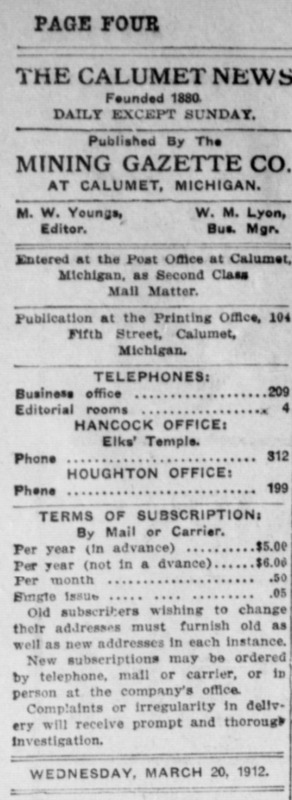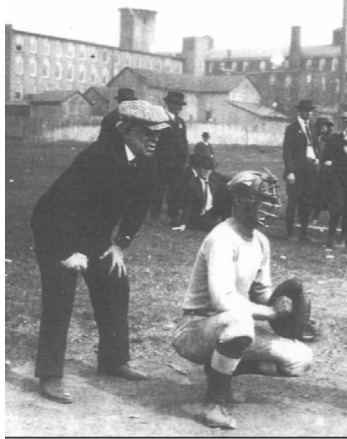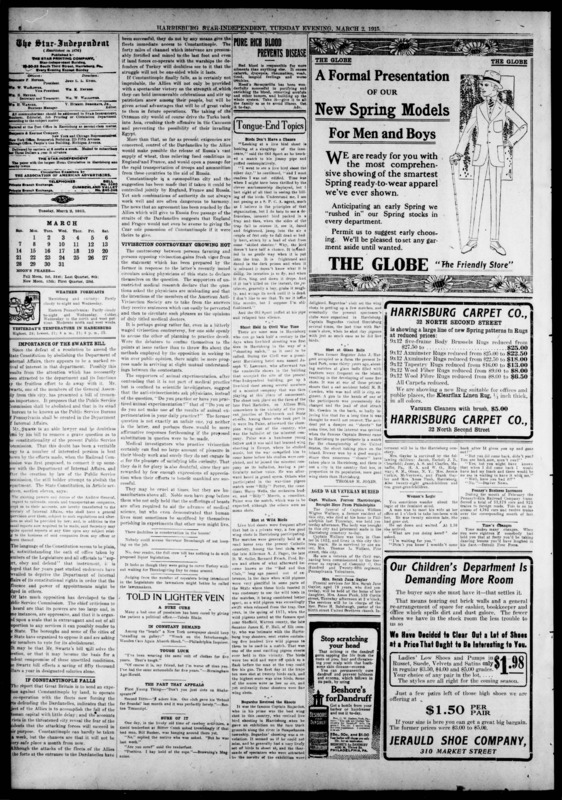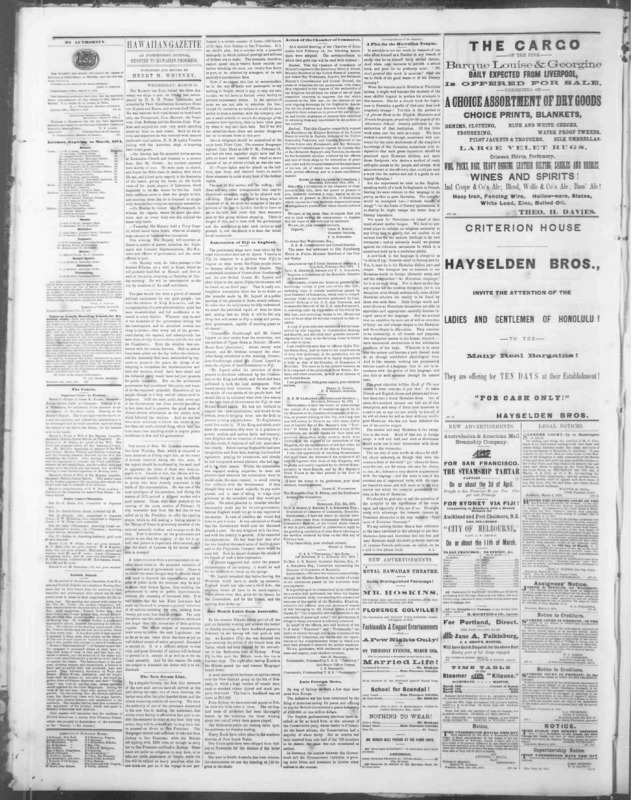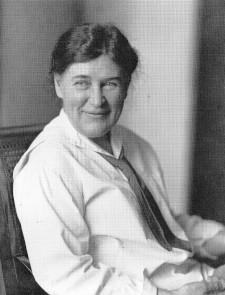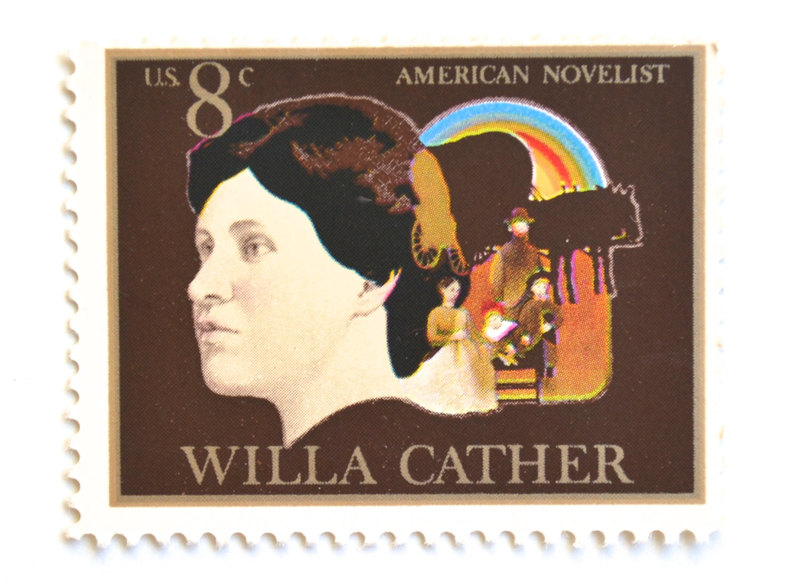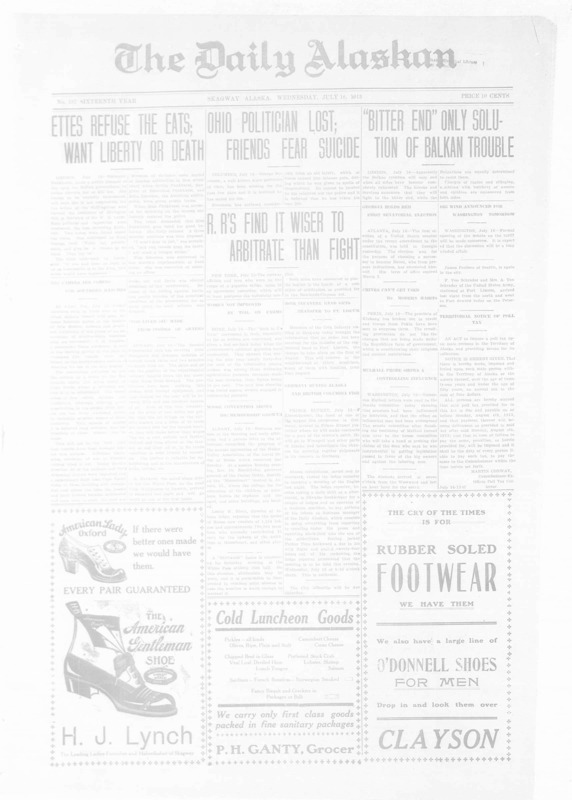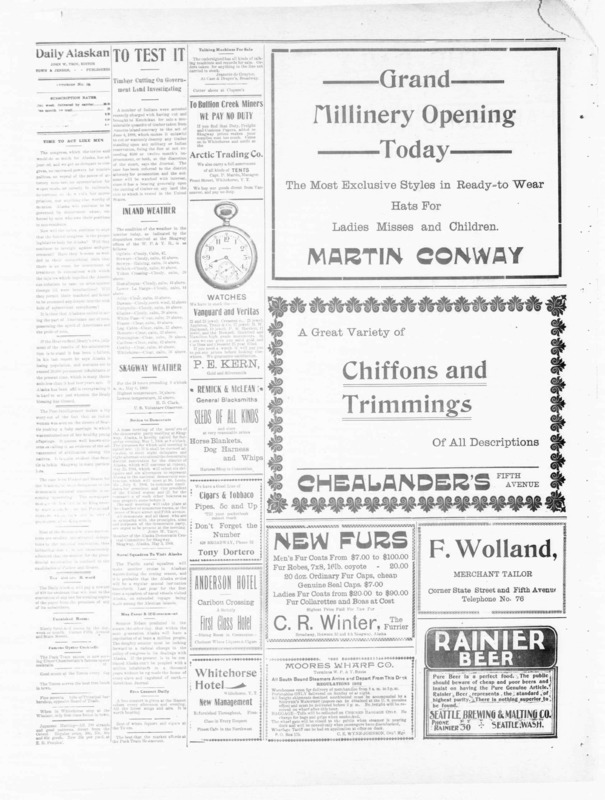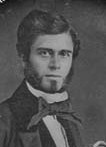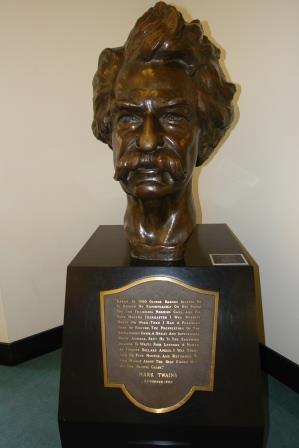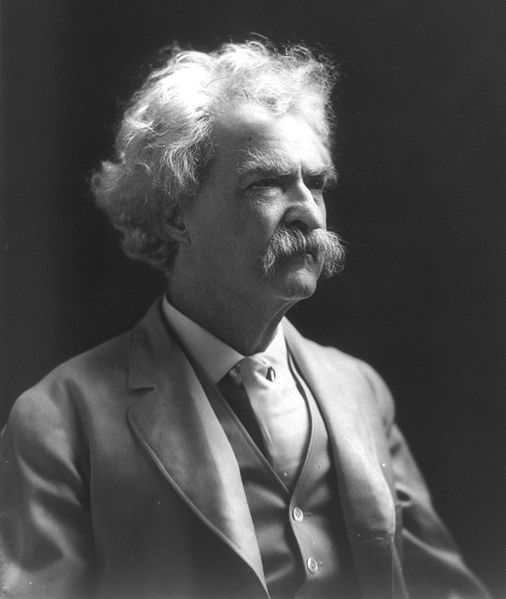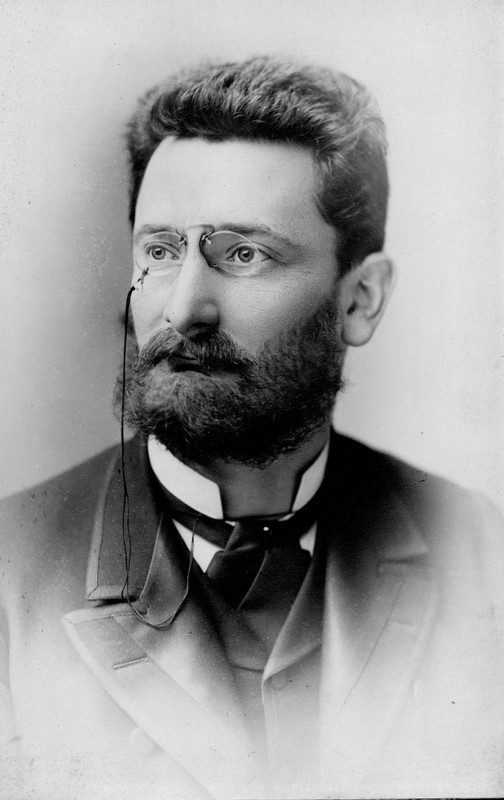Who's Who
New South
There are no specific names of reporters for this newspaper. However, one can conclude that there was a mixture of the general public reporting events and men working for the paper gathering information to produce the stories. The editor of the New South was a man named J. F. Parker. Parker’s job as editor leads us to assume that he may also belong to the democratic party. An editor’s job is to decide which stories are published as well as creating headlines for them. It is likely that Parker and Shannon worked together on the tone of which specific stories were published and the message that readers were intended to receive. Along with Shannon, there was another man who helped to publish this newspaper. His name was T.J. Hardy. There is almost no information on Hardy besides the fact that he was a publisher, so he most likely aided in paying for the New South to be published. James J. Shannon was the main publisher of the New South from when he bought it in 1889 up until 1905 when it was absorbed into one paper along with the Ellisville News. Before he had bought the New South, JJ Shannon already had previous experience in owning and publishing a newspaper. He was a founder of the Clarion, and worked on it from 1863 to1882, which was a democratic and state-wide newspaper. From this information, we can gather that Shannon was a democratic individual and had strong beliefs rooted in this party. James Shannon was also a member of the Mississippi Press Association. The Mississippi Press Association was an organization that represented newspapers from Mississippi that were at the very least a weekly paper and available for sale to the general population.
During the lifetime of the New South, Yellow Journalism was introduced in American newspaper. Yellow Journalism is a type of news that present little to no legitimate well-researched news events. Instead, eye-catching headlines are used to increase the sales of the paper even though the stories were not always written truthfully. According to Thomas D. Clark, “A vast majority of their readers have known the editors and generally have regarded them as stable and well-informed.” Readers of weekly papers often felt in touch with their editor and trusted that they would only provide them with the most important and true stories of the time. However, it is also true that editors were well aware of what not to print when trying to persuade their audience. They sometimes would twist details or even leave certain ones out in order to shape their readers’ opinions to coincide with their own. Editors had the ability to choose which stories, events and advertisements they were going to promote, as well as which ones they were going to portray in a negative light. The opinions of the editor and the publisher were much more influential when published in a weekly paper than the spoken by mouth of the general public. Working for a newspaper was a top job during this time because they were essentially the first to know what was going on around the country and the world. Without them, they would know almost nothing about surrounding states as quickly as they did. So, this job was one of prestige and trust which was easy for newspaper administrators to take advantage of.
The Calumet News
The publisher of the Calumet News was the Mining Gazette Company which is still publishing news today with their paper titled The Daily Mining Gazette. The editor of the newspaper was a man named M.W. Youngs and the Business manager named W.M. Lyons. Citizens could call into the office or go to the office to submit a story or give them a hit to another news story. Since it was a daily newspaper, they needed any source of information to report on. Also, it was the early nineteen hundred, so the newspaper was the only way to find out what is happening in town.
The Labor Argus
The original editor and publisher of the paper was a man by the name of Frank Snyder. Not a full blown socialist, Snyder was more interested in Unionism and the bettering of relations between the Employer and the Employee, to better working conditions but still allow the “Status Quo” of how the workplace was organized. Snyder was not just the editor of the paper, but that he was active, to at least some extent, with the actual men he was writing for as he was involved in events with the United Mine Workers. Charles Boswell took over the paper in 1911, and with this new editor, the Labor Argus became much more Leftist in nature, with more advocation of socialism and less about the Union-Employer relationship. Charles Boswell was arrested and put on trial in the case with Mary Harris Jones, better known as Mother Jones, a prominent figure in the fight for Workers Rights in West Virginia. It was suspected that Boswell had at least some connection to violence at Paint Creek, in which union workers fought against the Baldwin-Felts guards of the mine operators. The prosecutor of the case actually used the Labor Argus as written evidence as Boswell was the editor, and that newspaper had been on the side of the Labor Unions. The court used articles written by Boswell in the Labor Argus, as he was extremely critical of the Governor of West Virginia and his action taken against the mine workers during a massive strike. It was not just the newspaper that made Boswell a suspect, as he also had relationships with other prominent members of the Paint Creek incident, like socialist John W Brown who had been featured in the newspaper even before this incident.
The Star-Independent
The people involved in producing the newspaper are part of a big company in Harrisburg where the newspaper began. They were from The Harrisburg Evening Star and The Harrisburg Daily Independent. These two newspapers merged into The Star- Independent. Meyers who is the President of the newspaper, William W. Wallower who is the Vice President, William H. Warner is the Business Manager, and William K. Meyers the Secretary and Treasurer. The Directors are John L. Kuhn, William K. Meyers and William W. Wallower.
The editor of the newspaper is V. Hummel Berghaus, Jr. He was born in 1879 in Doylestown, Bucks County. He was the editor of the newspaper in the 1910s. He died in 1965. He was a huge fan of baseball and made sure the newspaper had a section of baseball when it was played. The Harrisburg Senators competed in the Tri-State League against archrivals Allentown Teutons and Reading Pretzels. The publisher was B.F. Meyers, who also happened to be the President of the newspaper. The newspaper is published by THE STAR PRINTING COMPANY, Star-Independent- Building, 10-20-22 South Third Street, Harrisburg, Pa, Every Evening Except Sunday.
The Hawaiian Gazette
From 1865 to 1869 the editor of the Hawaiian Gazette was John Mott Smith. John Mott Smith was the first dentist to set up a permanent practice in Hawaii. He practiced as a dentist from 1853 until 1865 when he gave his practice to John Morgan Whitney. During his time as a dentist, he became close friends with the King who offered him the position as editor of the Gazette in 1866. Mott Smith is the only editor of the Gazette who depicted the monarchy in a positive way. He sought to maintain the power of the monarchy and supported native Hawaiian rule and during his time as editor Hawaiian Gazette was made the official newspaper of the monarchy in 1868. After ending his editorial work, he served in several different government positions including Minister of Finance and Minister of the Interior. He remained part of the government until the end of the monarchy in 1893. From 1873 to 1877 the editor of the Gazette was Henry Martyn Whitney. Henry M. Whitney was born to missionary parents and was one of the only editors to speak both Hawaiian and English. Whitney started his newspaper career by working at the Polynesian until December of 1855 when he became the first postmaster general of Hawaii, a position he held until 1861. In 1861, Whitney left the position of postmaster general to start the paper Ka Nupepa Kūʻokoʻa as a response to the publication of the native Hawaiian newspaper Ka Hoku o ka Pakipika that fought back against American control over the island. Whitney's paper embodied the attempt to control the Hawaiian language in the press at this time, because it allowed extensive criticism of native traditions and beliefs, although he employed many native Hawaiians. In 1873 Whitney left his position at Ka Nupepa Kūʻokoʻa to become editor of the Hawaiian Gazette. From the beginning, it was clear that Whitney held much more American ideas than his predecessor which is shown in his campaign for free speech and minimized monarchal influence over the Gazette and his piece on the coronation ceremony of King Kalākaua, Whitney published a piece condemning the monarchy for wasteful spending even though the ceremony was intended to celebrate Hawaiian culture and traditions. During Whitney's time as editor, the Gazette supported many pro-American causes such as Dole's provisional government and the annexation of Hawaii into the United States. After the Gazette Whitney held various printing jobs throughout the 1880s and 90s. The paper was published by J.H. Black at the G.P.O. in 1861 or General Publishing Office which was a part of American printing infrastructure, which highlights the extent of American influence in the Hawaiian government and society prior to the start of the newspaper.
The Capital City Courier
In 1885, Mr. L. Wessel Jr. began writing and publishing The Capital City Courier at an office desk, and after six months it became a subscription newspaper. It received its widespread debut with the 1887 Nebraska State Fair where 10,000 copies were printed and sold to fairgoers. By 1889, its offices were moved to 12th street in Lincoln, where there were separate rooms for general business, and the other for composing and functioning as a “press room.” In 1894, W. Morton Smith became editor of The Courier. In 1895, Sarah B. Harris, and noted Nebraska author Willa Cather, were listed as associate editors. In 1896, Harris was promoted to editor of the paper, and smith was listed as the associate editor. While there would be some staffing changes as the newspaper continued, Harris remained editor of the newspaper until the newspaper closed in 1903. The paper was originally published by Wessel and Dobbs from, however, as the years continued it was published by the Courier Publishing Company once it changed its name to the Sunday Morning Courier.
Willa Cather was the most well-known individual on The Capital City Courier’s staff, and one of the most famous Nebraska poets. While she did move through the United States during her life, eventually settling in New York City, she was recognized most for her books about life on the Great Plains, and was awarded a Pulitzer Prize for her work on a World War One novel named One of Ours. However, the most notable detail of Willa Cather’s life was speculation about her sexual identity. Cather sometimes went under the name “William,” dressed masculine, and wore her hair short during her time at the University of Nebraska during the 1890’s. Further, she lived alone with noted editor Edith Lewis in New York for almost 40 years until she died, after which Lewis published a memoir of Cather titled Willa Cather Living. When Lewis died 25 years after Cather, the pair were buried next to each other in Jaffrey, New Hampshire. While Cather did not spend much time at The Courier, she continued to send work to be published throughout her lifetime.
The Daily Alaskan
We know a few things about the people involved in producing The Daily Alaskan. There is evidence throughout some of the issues that there were indeed reporters who conducted interviews and gathered information. One example comes from the July 16, 1913 issue describing the many duties of the “lodge reporter.” “Besides taking a daily shift as a pharmacist, is likewise bookkeeper for a couple of lodges and an operator of a linotype machine, to say nothing of his labors as business manager of the Daily Alaskan, which consists in doing everything from reporting to crawling under the press and squirting black-jack into the eye of the gliderfluke.” Regardless of what that last part of the quote was talking about, it appears that reporters for The Daily Alaskan had to work tirelessly. This makes sense when you think about the around-the-clock news stories reporters had to investigate when three papers were published each week. Also, with the population of Skagway at 492 in 1930, many of the people producing the paper had intimate knowledge of what was going on in their community.
The editors of The Daily Alaskan were a handful of men, one of which is possibly the most recognizable. They were as follows: Dr. L.S. Keller, Sid C. Charles, William M. Ward, and John W. Troy, the most identifiable one being the last. John Weir Troy, became the Territorial Governor of Alaska from 1933 to 1939. But before Troy became Governor, he edited The Daily Alaskan, and it is for this that he is most remembered for, believe it or not. He was appointed as territorial governor by Franklin Delano Roosevelt, and the people of Alaska were excited and relieved to have someone who they believed represented their interests. During an era when newspapers unabashedly supported one political party over the other, Troy’s newspapers openly supported Democratic candidates, reform ideals, and home rule.” Basically, home rule means exactly what it sounds like, the right to self-government. Indeed, The Daily Alaskan was littered with articles about the merits of home rule.
Unfortunately, Troy would not live to see his dream come true, but currently, “Nearly twice as many Alaskans live in home rule municipal governments as compared to general law municipal governments." What this meant for the paper at the time was that it subscribed to a more liberal policy and wrote and published articles reflecting that. As to who published the newspaper, not much is known about Town and Jensen. However, on the second page of nearly every issue, the names of both publisher and editor were recorded.
The Waterbury Democrat
The paper was founded by Cornelius Maloney, who ran the paper with his brother, Michael Thomas Maloney. They were both Irish immigrants who came to Waterbury, Connecticut. During the early 1830s, the Irish started immigrating to Waterbury and by the 1880s made up about half the city population. The Maloney brothers established the publishing firm of CMT Maloney in 1882. This firm published The Waterbury Democrat, which reflected Cornelius' political values. Cornelius became involved in politics and served as a Democratic representative in the Connecticut General Assembly in 1887 and 1888. The two brothers became a major force in local politics during this time frame. Because they were Irish and the Irish had faced a lot of discrimination from the Protestant community, they supported the Irish nationalist cause and advanced a common person, populist, pro-labor viewpoint. Cornelius learned the printing and newspaper business in New Britain, Connecticut, while working for the New Britain Record and the New Britain Observer.
Cornelius hired a known Irish activist Stephen J. Meany as the very first editor of the daily Waterbury Democrat. Meany had a populist, pro-labor viewpoint, and promoted Democratic causes in the newspaper. Meany was a labor promoter and promoted religious liberty, as this was an important cause for Meany and the Maloneys since the Irish had overcome discrimination from the Protestant community. Meany also fought against capitalism and monopolies. For example, in an editorial for the very first edition of The Evening Democrat, Meany advanced his belief in the greatest good of the greatest number; the triumph of popular rule over oligarchical recklessness; and the requital for honest labor as against capitalist greed.
The Sacramento Daily Record Union
John F. Morse was the first editor of The Sacramento Daily Record Union and is credited with the rapid expansion of the paper in the first year of its run, being 1851. Doctor Morse was a physician from Vermont that came to California in 1849 on a ship, where he worked as a surgeon, when he arrived he settled in Sacramento and opened a hospital. It was in the projecting stages of the paper that Morse was offered a job as editor, which he accepted and worked at for a year, before returning to his work as a doctor. He is said to have helped many sick immigrants and left “the State more thoroughly and familiarly acquainted with medical literature and science, their history, researches and latest results.”
Samuel Langhorne Clemens, better known by his pen name of Mark Twain, is a man that should need no introduction. His writings include American classics such as The Adventures of Tom Sawyer and Huckleberry Finn but he also wrote for the Sacramento Daily Record Union in 1866. He wrote of his trip to the Sandwich Islands in the paper, which is modern day Hawaii, in regularly published voyage logs. These logs, being humorous recordings of his travels, are also considered by many (and by himself) to be where Mark Twain started to really become popular. The logs also made the paper wildly successful during the time of their publishing. His contributions to the paper are shown with a bust that was made by The Sacramento Daily Record Union of Twain with an engraved quote from him that says “Early in 1866, George Barnes invited me to resign my reportership on his paper, the San Francisco Morning Call, and for some months thereafter, I was without money or work; then I had a pleasant turn of fortune. The proprietors of the Sacramento Union, a great and influential daily journal, sent me to the Sandwich Islands to write four letters a month at twenty dollars a piece. I was there for four or five months, and returned to find myself about the best known man on the Pacific Coast.” It is said that whenever the paper found itself low on funds, they would sell an old office desk under Twain’s name for a hefty sum.
Little information is available about the publishing, writers, and editors of The Sacramento Daily Record Union during the years of 1880-1885. The names of reporters on stories are rarely mentioned, and there is practically no information to be found on those credited reporters, but they did exist. This is proven by a statement used as one of the original selling points of the paper by the first editor John F. Morse when he said The Sacramento Daily Record Union was “to have an efficient correspondent in every important town and mining region in the state.” The Sacramento Daily Record Union occasionally covered national and foreign news, but it's true focus was always on news pertaining to Sacramento and the state of California.
The New-York Evening World
Joseph Pulitzer was the founder and publisher of the New York Evening World printing company. Born in Mako, Hungary, he moved to Boston, Massachusetts in 1864 and served in the Union Army during the American Civil War After the war, he moved to St. Louis, Missouri and gained a profit from his share in the newspaper, the Westliche Post. The profit he made helped him to purchase the St. Louis Dispatch and St. Louis Post and merge them into one newspaper, known as the St. Louis Post-Dispatch. In 1883, Pulitzer moved to New York City and purchased the New York World from financial speculator, Jay Gould. The success of the New York Evening World came out of Pulitzer’s rivalry with William Randolph Hearst (founder of the New York Journal). According to Pulitzer biographers George H. Douglas and Nancy Whitelaw, the success of the New York Evening World came from Pulitzer’s decision to make daily newspaper prices cheap for consumers and focus on lower-class citizens as well as immigrants.
Pulitzer was able to hire team members that he worked with on the St. Louis Post-Dispatch and persuaded editors to leave their positions at the New York Sun and New York Herald. George H. Douglas notes in his monograph, The Golden Age of the Newspaper that “In his early months in New York Pulitzer had a difficult time recruiting staff, but as circulation figures soared, he was able to hire good men away from major New York newspapers like the Sun and the Herald. For example, he stole a brilliant editor named Ballard Smith from the Herald, making him managing editor. S.S. Carvalho came over from the Sun to edit the Evening World when that paper made its appearance in 1887. And with his rising eminence Pulitzer was able to raid papers all around the country. As chief editorial writer he brought in William H. Merrill from the Boston Herald. Most importantly, Pulitzer raided his own St. Louis Post-Dispatch, bringing on board Col. John A. Cockerill as editor-in-chief”. (104)
The Oxford Democrat
During the one hundred years of publishing, the Oxford Democrat was under management of multiple different people. The ownership of the paper transitioned many times under multiple names and companies, including: “G.W. Millett & King, 1833-1834; G.W. Millett, 1834-1850; Millett & Mellen, 1850; Geo. L. Mellen & Co., 1850-1852; Geo. L. Mellen, 1852-1853; Noah Prince et al., 1853-1855; W.A. Pidgin & Co., 1855-1856; Darius Forbes, 1856-1857; W.A. Pidgin & Co., 1857-1867; F.E. Shaw, 1867-1873; F.E. Shaw & Co., 1874; Geo. H. Watkins, 1874-<1876>.” The Oxford Democrat was also host to a large number of editors, sometimes also occupying the position of publisher. Throughout the years, the newspaper ironically transitioned into more Republican leaning. The publishers were: “J.G. Cole, 1833-1839; G.W. Millett, 1839-1852; G.F. Emery, 1852-1853; T.H. Brown, 1853-1856; J.J. Perry, 1856-1867; F.E. Shaw, 1867-1874; T.H. Brown, 1874-1876; G.H. Watkins, <1876>” Notable on the list is ‘G.W. Millett’, original founder, who later bought the paper from co-founder Octavius King.
The Ocala Evening Star
C.L Bittinger was the editor and the business Manager for the Ocala Evening Star, along with R.N. Dosh. Porter & Harding published the Ocala Evening Star on every Thursday. When the Ocala Evening Star is published one can subscribe to the paper for a year for only one dollar.
The Jersey City News
The information regarding the paper’s publishing company, editor, business contact and more can be easily located on the second page of every issue, at the top left corner of the page, which is indicated with a description stating, “The Jersey City News- Published every afternoon." Starting with the first edition in February of 1889 until September of 1889, the newspaper was published by the Jersey City News Company. However, the name of the publishing company changed multiple times throughout the seventeen years that the paper produced issues. After the Jersey City News Company, the paper is published daily by the News Publishing Company until August of 1890, when the publisher changes again to the City Publishing Company. The Jersey City News then keeps the same publishing company, City Publishing Company, for the complete duration of the newspaper’s run. The Jersey City News was edited daily by a man named James Luby, an Irish immigrant who resided in Jersey City and started his career as a journalist around the city, staying local and reporting on Jersey City's news. James Luby, whose father was a famous Irish prisoner named Thomas Clark Luby who was arrested for treason and considered one of the founding fathers of the Irish Republican Brotherhood, was the editor for The Jersey City News until 1903, almost all of the paper’s lifespan was under the guise of Luby. After Luby’s departure from The Jersey City News, he worked as a copy editor for The New York Sun.

